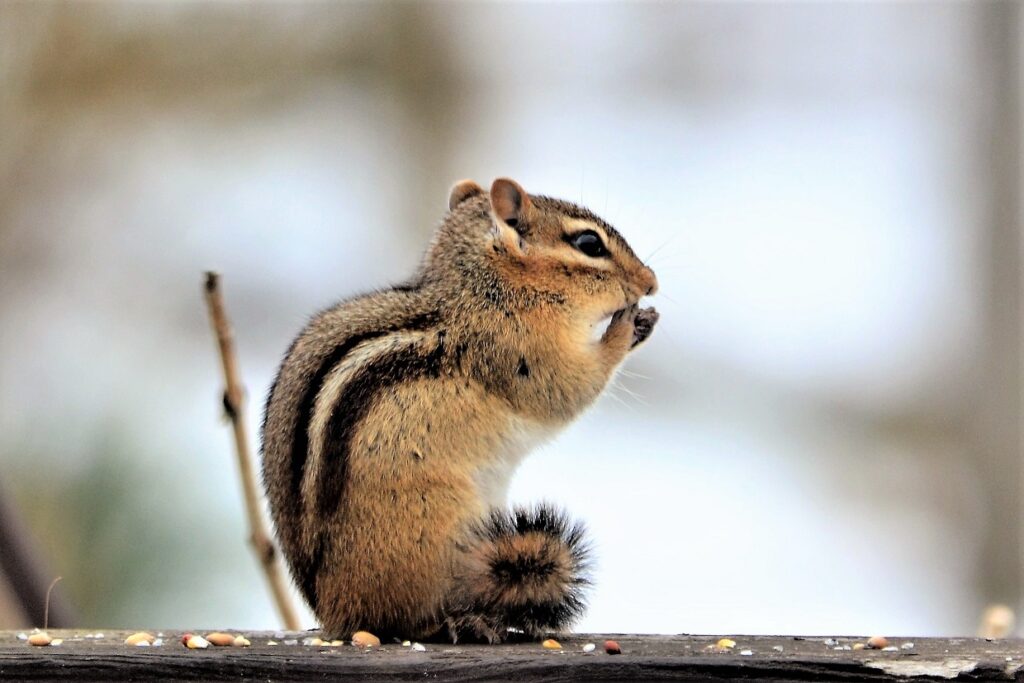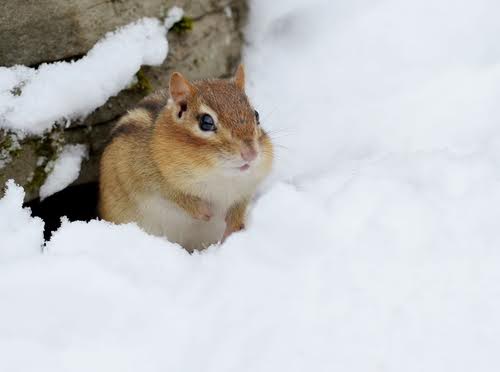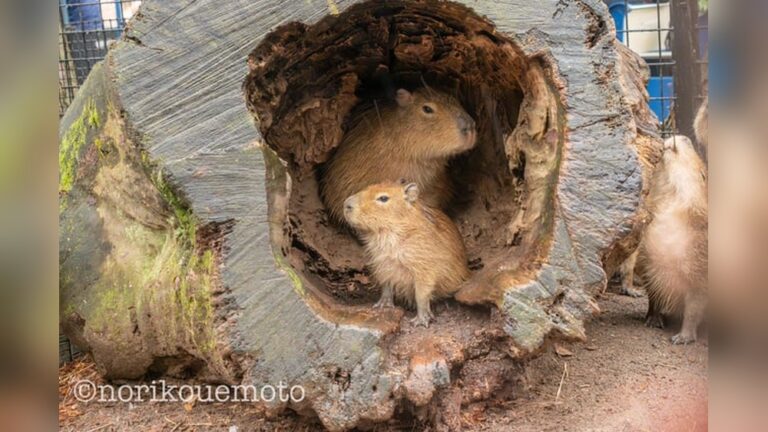Chipmunks Come Out Of Hibernation: Surprising Signs & Facts
Have you ever wondered when chipmunks wake up after winter? Those tiny creatures disappear for months, leaving you curious about their secret lives.
When chipmunks come out of hibernation, it signals the arrival of warmer days and new beginnings in nature. But there’s more to their comeback than just waking up—they face challenges, find food, and get ready for spring. Keep reading to discover how these small animals survive the cold and what happens the moment they reappear.
This knowledge will change the way you see chipmunks and the world around you.
When Chipmunks Wake Up
Chipmunks spend the cold winter months in a deep sleep called hibernation. This rest helps them save energy when food is scarce. As the cold fades, chipmunks slowly start to wake up. Their return to activity depends on many natural signs. Understanding this timing helps us see how chipmunks survive in the wild.
Waking up is not sudden. It happens step by step as conditions improve. The process is linked closely to changes in the environment. Chipmunks must be ready to find food and avoid predators after hibernation. Their body and behavior adjust to the new season carefully.
Timing Of Emergence
Chipmunks usually wake up in early spring. This is when the weather begins to warm. Snow melts, and plants start to grow again. The exact time varies by location and year. Warmer places see chipmunks awake sooner than colder ones. Most chipmunks emerge between late February and April.
They do not leave their burrows all at once. Some wake earlier, while others stay longer. This staggered timing helps reduce competition for food. It also lowers their risk from predators during the vulnerable early days.
Environmental Triggers
Several natural signs tell chipmunks it is time to wake up. One key trigger is temperature rise. Warmer days signal that winter is ending. Another trigger is daylight length. Longer days help reset their internal clocks.
Food availability plays a role too. Chipmunks sense when plants and insects return. This encourages them to leave their nests. Moisture from spring rains also affects their activity. These environmental cues work together to end hibernation safely.

Credit: westchesterwildlife.com
Behavior After Hibernation
Chipmunks show clear changes in behavior after hibernation. They become active and alert quickly. Their bodies adjust from deep rest to busy days. This shift affects how they eat and interact with others.
After waking up, chipmunks focus on survival tasks. Food gathering and social activities take priority. These actions help them regain strength and prepare for warmer months.
Food Gathering Habits
Chipmunks start searching for food soon after hibernation ends. They look for nuts, seeds, and berries nearby. This diet helps restore energy lost during sleep. They also collect and store food for later use. These habits ensure they have enough to eat as spring progresses.
Busy gathering food is essential for their survival. Chipmunks work quickly to build their stores. This behavior shows their natural instinct to prepare ahead.
Social Interactions
Chipmunks become more social after hibernation. They communicate with sounds and body movements. This helps them establish territories and avoid fights. Social bonds also form during this time. These connections support mating and raising young.
Meeting others is important for their survival. Through interaction, chipmunks share information about food and threats. Their social behavior strengthens as the season moves on.
Physical Changes Post-hibernation
Chipmunks undergo notable physical changes after coming out of hibernation. These changes help them adjust from a long period of rest to active life. Their bodies react to the season and prepare for survival and daily activities. Understanding these changes reveals how chipmunks stay healthy and ready for spring.
Weight Fluctuations
Chipmunks lose a significant amount of weight during hibernation. Their metabolism slows down, and they use stored fat for energy. This fat loss causes a leaner body once they wake up. After hibernation, chipmunks eat more to regain weight. They need extra energy for moving and finding food. Weight gain happens gradually as they become more active.
Fur And Appearance
Chipmunk fur changes with the seasons. After hibernation, their fur looks thicker and fuller. This thicker coat protects them from cold spring weather. Their colors may appear brighter or more vibrant. The fur also helps chipmunks blend into their surroundings. As spring progresses, the fur may thin out for summer warmth.

Credit: varmentguard.com
Surprising Signs Of Awakening
Chipmunks waking from hibernation show clear signs. These signs help us know they are active again. Observing these clues can be fascinating and surprising.
Chipmunks do not just wake up quietly. Their behavior changes in ways that catch attention. Noticing these signs reveals their return to the outside world.
Increased Vocalizations
Chipmunks start making more sounds as they wake. Their chirps and chatters become louder and frequent. These noises signal their alertness and readiness to explore.
Calls often serve to communicate with other chipmunks. They warn of danger or show territory claims. Hearing these sounds means chipmunks are fully awake.
Burrow Activity Patterns
Burrows become lively with chipmunk movements. They leave and enter their homes more often. This activity shows their need to gather food and check surroundings.
Burrow entrances appear disturbed with fresh digging signs. New tunnels or cleaned paths show recent use. Watching these patterns helps track chipmunks’ active times.
Chipmunk Hibernation Facts
Chipmunks do not hibernate like bears or ground squirrels. Instead, they enter a light sleep called torpor. This helps them survive cold winter months. Their body temperature drops, and their heart rate slows. Yet, they wake up often to eat stored food. This unique behavior helps chipmunks stay alive in winter.
Understanding chipmunk hibernation reveals how they save energy. It also shows their survival skills during harsh weather.
Difference From True Hibernation
True hibernators stay asleep for months without waking. Their body functions slow down to very low levels. Chipmunks, on the other hand, wake up every few days. They eat food they stored before winter. This wake-and-eat cycle is not seen in true hibernators.
Chipmunks also keep their body temperature higher than true hibernators. This helps them quickly react to danger. Their sleep is shorter and lighter. This type of rest is called torpor, not full hibernation.
Energy Conservation Strategies
Chipmunks lower their energy use by reducing movement and slowing body functions. They stay in burrows to avoid cold winds. They eat food stored in small underground chambers. This stored food gives them energy during wake periods.
By waking up often, chipmunks can keep their muscles working. This prevents weakness during winter. Their energy-saving methods help them live through harsh winters. These strategies balance rest and activity well.

Credit: www.youtube.com
How Weather Affects Chipmunks
Chipmunks rely heavily on the weather to decide when to leave their winter sleep. Changes in temperature and seasons guide their behavior. Their body clocks react to these natural cues. This helps them survive and find food at the right time.
Impact Of Early Springs
Early springs can wake chipmunks sooner than usual. Warmer days signal them to leave their burrows. They begin searching for food quickly. This helps them build energy after a long rest. Plants and insects also appear earlier, offering more food. But early springs may confuse chipmunks if cold returns.
Response To Cold Spells
Cold spells can delay chipmunks coming out of hibernation. They may return to their burrows to stay warm. Sudden cold can slow their movements and reduce food availability. Chipmunks must conserve energy during these times. They avoid unnecessary activity to survive harsh weather. Cold spells test their ability to adapt.
Chipmunk Habitats And Hibernation Spots
Chipmunks find special places to live and rest during cold months. Their habitats provide shelter and safety. These small animals dig burrows to sleep and hide. Understanding where chipmunks stay helps us learn about their behavior and survival.
They choose spots that protect them from weather and predators. Their homes are cozy and hidden underground. These places keep chipmunks warm while they rest for winter.
Preferred Burrow Locations
Chipmunks like to dig near trees or bushes. These spots offer cover and food nearby. They often build burrows under roots or logs. The soil must be soft enough for easy digging. Burrows have tunnels and chambers for storage and sleep. These locations help chipmunks stay safe and comfortable.
Safety Measures During Dormancy
Chipmunks prepare their burrows carefully for winter. They store food like nuts and seeds inside. This helps them wake up and eat without going outside. Burrows have multiple entrances to escape if needed. Chipmunks line their homes with leaves and grass for warmth. These actions protect chipmunks during long, cold months.
How Smart Pets Lover Can Help You with Chipmunks Come Out Of Hibernation
Practical Learning Opportunities as Chipmunks Come Out of Hibernation
Watching chipmunks emerge from hibernation offers a unique chance to observe nature’s resilience up close. As they adjust their behavior after months of dormancy, you can witness surprising signs of awakening, such as increased activity and foraging. This transitional period also highlights physical changes post-hibernation, like regaining strength and fur condition, making it a rich learning moment for anyone fascinated by wildlife.
For pet parents and animal lovers eager to deepen their understanding, tracking how weather affects chipmunks’ return to their habitats can provide practical insights into their survival strategies. Taking notes or even sketching their movements can nurture a more empathetic connection to these small creatures, aligning with the values of responsible animal care that Smart Pets Lover champions. If you want to share your observations or ask questions, connecting with wildlife experts or local nature centers can be a valuable resource.
Remember, every chipmunk’s story as it wakes is a reminder of nature’s rhythms—where every chirp and scurry tells a story worth appreciating.
Frequently Asked Questions
When Do Chipmunks Come Out Of Hibernation?
Chipmunks typically emerge from hibernation in early spring. They wake as temperatures rise and food becomes available. This usually happens between March and April, depending on the region and climate.
How Do Chipmunks Prepare For Hibernation?
Before hibernating, chipmunks gather and store food in their burrows. They eat extra to build fat reserves. These preparations help them survive the winter when food is scarce.
What Triggers Chipmunks To Wake From Hibernation?
Warmer temperatures and longer daylight hours signal chipmunks to wake. These environmental changes stimulate their metabolism and prompt them to leave their burrows.
Do Chipmunks Eat Immediately After Hibernation?
Yes, chipmunks search for food soon after waking. They need to replenish energy lost during hibernation. They eat seeds, nuts, and small insects to regain strength.
Conclusion
Chipmunks wake from hibernation as the weather warms up. They start to search for food and become more active. Watching them can teach us about nature’s cycles. These small creatures play an important role in the ecosystem. Their return marks the start of spring and new life.
Keep an eye out for chipmunks in your area this season. Nature’s rhythm continues, bringing fresh energy and growth. Simple, yet fascinating.






